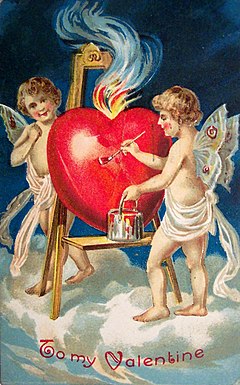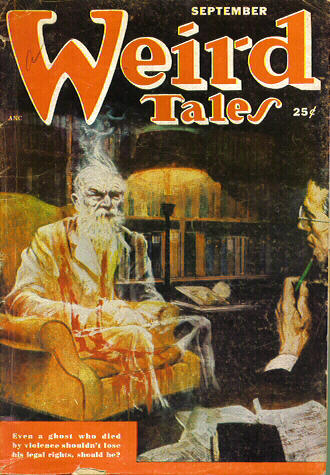
* * * *
 Today is Valentine’s Day, which makes this a perfect time to explore the Bible’s “erotic love poem.” And besides, Lent is coming up. (It starts on March 1, with Ash Wednesday.*) And that means 40 days of “penance, repentance of sins, almsgiving, atonement, and self-denial.”
Today is Valentine’s Day, which makes this a perfect time to explore the Bible’s “erotic love poem.” And besides, Lent is coming up. (It starts on March 1, with Ash Wednesday.*) And that means 40 days of “penance, repentance of sins, almsgiving, atonement, and self-denial.”
So now is the perfect time to live it up a little…
Anyway, Valentine’s Day started off as a purely “Christian liturgical feast day honoring one or more early saints named Valentinus.” And several “martyrdom stories” circulated about various Valentines connected to February 14, the most popular being Saint Valentine of Rome. He was imprisoned for – among other things – “ministering to Christians,” and according to one account, he healed the daughter of his jailer. Then – shortly before his execution – he “wrote a letter [to the daughter] signed ‘Your Valentine’ as a farewell:”
The day first became associated with romantic love within the circle of Geoffrey Chaucer in the 14th century, when the tradition of courtly love flourished. In 18th-century England, it evolved into an occasion in which lovers expressed their love for each other…
Which brings us to the Bible’s own love poem, the Song of Songs. (Aka, “Song of Solomon.”)
 Isaac Asimov wrote of the “Song of Songs” in his Guide to the Bible: Two Volumes in One. He used five pages to cover the book,* first noting that this was the “third of the canonical books to be attributed to Solomon.” (Shown at left, he was the son of Israel’s King David who became widely known for his wisdom, as well as for his habit of acquiring “foreign wives,” as shown below.) Asimov added:
Isaac Asimov wrote of the “Song of Songs” in his Guide to the Bible: Two Volumes in One. He used five pages to cover the book,* first noting that this was the “third of the canonical books to be attributed to Solomon.” (Shown at left, he was the son of Israel’s King David who became widely known for his wisdom, as well as for his habit of acquiring “foreign wives,” as shown below.) Asimov added:
The Song of Solomon is a love poem, frankly erotic, apparently composed to celebrate a wedding. This, too, is appropriate, for Solomon had numerous wives and was, presumably, an experienced lover.
(See for example, 1st Kings 11:3: “He had seven hundred wives of royal birth and three hundred concubines, and his wives led him astray,” which sounds about right…)
And here are some highlights. For starters, the poem features a back-and-forth exchange between a man and woman. (Together with “Others,” acting as a kind of chorus.)
It starts off with the woman saying, “Let him kiss me with the kisses of his mouth!” (1:2, and in verse 3, she adds that “virgins love you.”) In verse 1:13 the woman says, “My beloved is to me a sachet of myrrh that lies between my breasts.” Moving on, in 4:5 the man tells the woman: “Your two breasts are like two fawns, twins of a gazelle, that graze among the lilies.”
In Chapter 7, verses 1-3, the man adds these observations:
Your rounded thighs are like jewels, the work of a master hand. Your navel is a rounded bowl that never lacks mixed wine. Your belly is a heap of wheat, encircled with lilies. Your two breasts are like two fawns, twins of a gazelle.
Which raises an interesting question: Why don’t Biblical Fundamentalists interpret the Song of Songs literally? That is, why don’t they adhere to the “exact letter or the literal sense” of this book? It also brings up the matter of selective interpretation.
 On that note Asimov added, “Because of the erotic nature of the book, it has been customary to find allegorical values in it that would make it more than a description of bodily passion.” Thus:
On that note Asimov added, “Because of the erotic nature of the book, it has been customary to find allegorical values in it that would make it more than a description of bodily passion.” Thus:
Jews would have it speak of the love between Yahveh and Israel; Catholics of the love between Christ and the Church; Protestants of the love between God and man’s soul. However, if we simply accept the words as they stand, the book is a human love poem and a very beautiful one.
Which is fine, but why not be consistent? Or in the alternative, why reject a spiritual, or even – (gasp!) – a liberal interpretation of the Bible, in favor of only a literal interpretation?
Which brings up the whole point of this blog. The point is that if you limit your Bible-study to a purely literal interpretation, you’re robbing yourself of at least half it’s value. (And driving potential converts away in droves.) But if you move on from a purely literal interpretation, to an open-minded spiritual interpretation, your Bible-study can take you to exotic adventures and explorations that you couldn’t have dreamed of before.
Or as St. Paul said, God made us “servants of a new covenant not based on the letter [of the law] but on the Spirit, for the letter kills, but the Spirit gives life.” (2d Corinthians 3:6.)
Put another way, if Jesus had been a Biblical conservative and/or literalist, we’d all still be Jewish. And besides, by taking that “open” approach you won’t have to find a non-erotic literal-but-pure meaning of “your rounded thighs are like jewels, the work of a master hand…”
* * * *

“Solomon sinned by acquiring many foreign wives…”
(Which made him well-versed in the “Art of Love?“)
* * * *
The upper image is courtesy of Valentine’s Day – Wikipedia. The caption: “An English Victorian era Valentine card located in the Museum of London.”
“Note” also that an asterisk in the main text indicates a statement supported by a reference detailed further in this “notes” section. Thus as to Asimov using “five pages to cover” the Song of Songs: The reference is to the 1981 Avenel Books edition of his Guide to the Bible, at pages 518-23.
Re: Canonical “Solomon” Bible books. He is said to have written Proverbs, “a collection of fables and wisdom of life;” Ecclesiastes, a book of contemplation and self-reflection, and Song of Songs. The black-and-white image to the left of the paragraph about him is captioned: “An engraving, ‘Judgment of Solomon,’ by Gustave Doré (19th century).”
The “Weird Tales” image is courtesy of the Wikipedia article on Isaac Asimov. The caption: “The novelette ‘Legal Rites,’ a collaboration with Frederik Pohl, was the only Asimov story to appear in Weird Tales.” The article noted that in addition to his interest in science and history, Asimov was “also a noted mystery author and a frequent contributor to Ellery Queen’s Mystery Magazine. He began by writing science fiction mysteries … but soon moved on to writing ‘pure’ mysteries.”
The lower image is courtesy of Solomon – Wikipedia. The caption: “Solomon sinned by acquiring many foreign wives. Solomon’s descent into idolatry, Willem de Poorter, Rijksmuseum.”